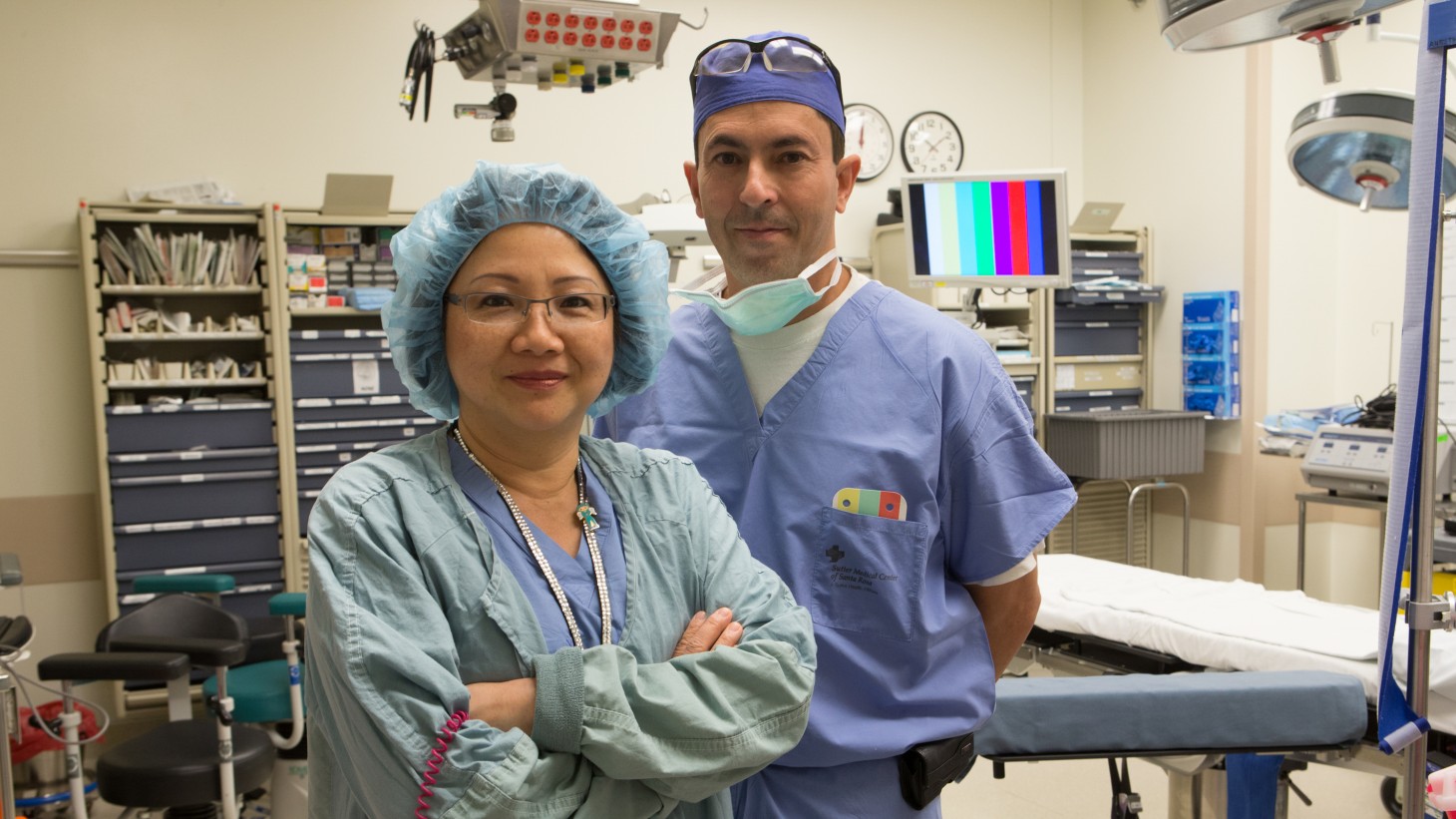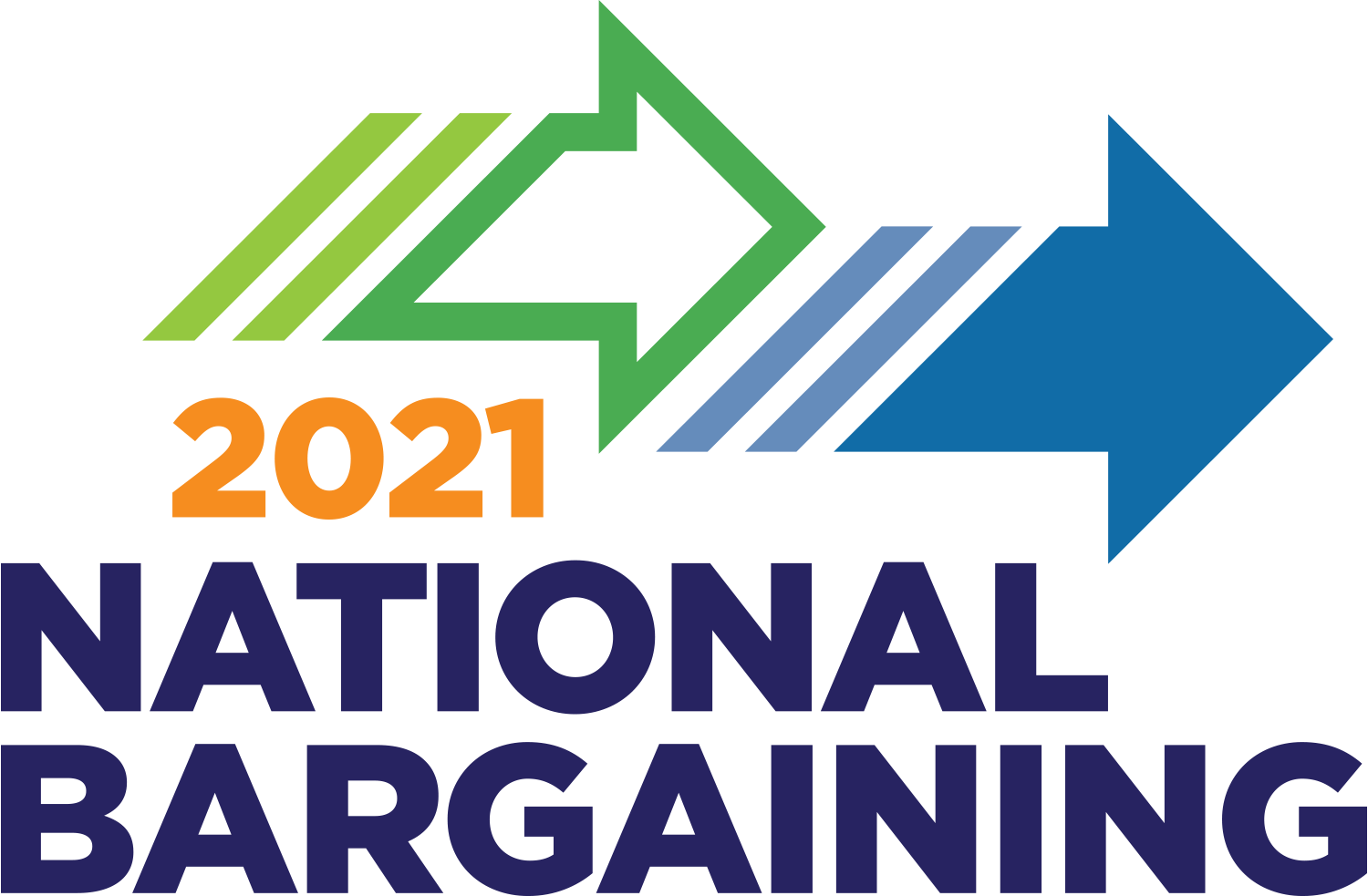HANK Winter 2013
Peer Advice: Red Bad, Black Good

UBT co-leads Yoland Gho, Fremont operating room nurse manager, and Gus Garcia, surgical tech and SEIU-UHW steward
Fremont’s Operating Room team loved taking the first parts of Northern California’s business literacy training—so much so, it immediately requested the last two sessions, when teams pull out their budgets to review line-item expenses for the department. The review of payroll and non-payroll budgets has caused controversy and concern in some quarters, but the Fremont OR team not only took it in stride, it rode the momentum of the training by developing several performance improvement projects to reduce waste. One of those, streamlining its ready-made surgical supply packs, is projected to save roughly $34,000 a year. The Northern California training began rolling out in 2011. The first three sessions are a tutorial on the basics of Kaiser Permanente business, explaining such things as our integrated business model (how the various KP entities do business together), key sources of revenue, and business concepts like margin goals. The rubber meets the road in the final two sessions, with their look at the department’s financial realities. Team co-leads Yolanda Gho, Operating Room nurse manager, and Gus Garcia, a surgical technologist and SEIU UHW steward, talked with communications consultant Cassandra Braun about the training, its benefits and how it inspired their team to do better.
Q & A
Q. Were you concerned about sharing the department’s payroll and non-payroll budget with staff?
Gho: Not really. I thought, “Why don’t we highlight the areas where we have opportunities to improve, like sutures—ones we can improve on and have control over.” With payroll, my one concern was showing someone’s salary. But it was explained that they didn’t show individuals’ salaries. So I was totally on board.
Q. What was the staff’s reaction to the training?
Gho: The response was quite eye-opening. There was an audible gasp. When they saw [the red lines], they were like, “Oooh, I thought we were doing great. Why do we have all that red on the screen?” What’s great about this group is their minds immediately started running, thinking about what they could do.
Garcia: To me, it’s like: We can fix that, or come up with ideas (for fixing it). That is what melds it all together.
Q. Talk about your project to streamline surgical packs and how it was influenced by the business literacy training.
Garcia: Surgical packs have draping and supplies for each particular procedure. They’re ready-made. So you always had to add things or throw away things that you didn’t want, depending on the procedure. I was trying to see what we need or don’t need. I worked with the supplier and our teams, like general surgery, and I asked their opinion—“What do you need in this thing and what do you not need?” We streamlined the packs to have the bare minimum. So everyone uses everything in the pack.
Gho: After the training, Garcia wanted to revisit this issue, because he had brought this up before.
Garcia: The wheels were turning in my head. If we’re not using it, we’re wasting money.
Q. You also started work on reducing waste of sutures and other supplies?
Gho: Yeah, it was a culture change. In the past, as a nurse or tech, you were trained to always be ready. You were trained that the surgeons shouldn’t have to ask for something. Some people think that if they’re able to do that, they’re seen as efficient and anticipating the needs. But the world is different, the economy is different. Now we have to ask ourselves, “Do we need to have this open to look good or just in case a surgeon asks for it? Or is it OK not to open it, but to have it in the room and ready?” Before, we were all trained that way—anticipate, anticipate, anticipate. We now give ourselves a centering moment before we open sutures or supplies that are not needed immediately for a case.
Q. What advice would you give to other teams thinking about taking business literacy training?
Gho: My advice is to help educate your staff members by being transparent about information that affects them and the team. As a manager, I want to create awareness and understanding of the issues with my staff. It bridges the information and knowledge gap. The more we’re armed with information, the better decisions we make.
Garcia: If it was up to me, I’d have everyone take the class. I think it just gives you a different perspective. It breaks it down and gives you an overall view that staff members don’t get to see all the time. It keeps them informed.
Gho: People tend to complain about things but do nothing about it. In our UBT, you bring solutions. We’re doers. It’s our chance to do something.
